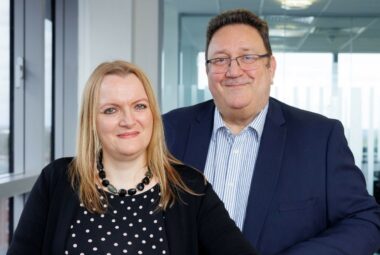
Key trends 2015: European patent statistics
Overview
The figures are in1 and the headline is that 2015 was another bumper year for the European Patent Office (EPO) with the overall statistics suggesting a welcome increase in innovation and strong growth from the US and China. Patent applications rose by 4.8% to 160,022 in 2015 with the total number of filings increasing 1.6% to 278,867. The medical, digital, computing and engineering sectors have continued their sustained growth over the last ten years, while electrical, chemistry, automotive and biotech/pharma applications have remained broadly flat.
The UK saw healthy growth, largely thanks to a large filing push from Rolls Royce. However, unlike some countries, the UK is not dominated by a few large companies, but instead has a broadly even distribution of research interest, contributing 3-4% of total applications in almost all key sectors and just over 3.1 % of all applications.
When examining the number of patent applications per country per head Switzerland came top, with 872.7 applications per million inhabitants, mirroring their place in the Global Innovation Index [1]. The Netherlands, Sweden, Finland and Denmark round out the top five, with the US and UK in respective 12th and 16th place.
For applicants, Philips regained top spot from Samsung, with LG, Huawei and Siemens making up the top five filers. US companies were the biggest movers in the top 50, with Medtronic, United Technologies and General Electric all filing 50% or more applications year on year. Rolls-Royce were another big mover, posting a 92.9% increase with 540 applications filed in 2015. Large enterprises continued to dominate, with 69% of all filings, compared to 26% for SME’s and private individuals and 5% for universities and other public institutes.
Patent filings
The growth in filings was driven by the USA, up 16.4% to 42,692. This is most likely an aftershock driven by the introduction of the America Invents Act (AIA) in March 2013 with the resulting reverberations of ex-PCT (international) applications maturing in October 2015. China continued its exponential patent growth, filing 5,721 applications, up 22.2% to 8th place overall, moving ahead of the United Kingdom (5,037 applications, up 5.7%).
The medical technology sector which covers the broad spectrum of: medical instruments for diagnosis; treatment of diseases and surgery; vaccination instruments; prostheses; surgical robots; computed tomography and pacemakers, was the most popular with 12,474 applications, up 11%. US applicants were particularly active in this field, accounting for 41% of filings. Digital communication (inc. electronics), computer technology (inc. data processing) and electrical machinery all also had 10,000+ filings.
Transport, covering: vehicles; vehicle tyres; wheels; windows and roofs; and railway systems, remains popular with 7,802 filings, whilst engines, pumps and turbines grew by 17.9% to 6,374 filings. Elsewhere, biotechnology and pharmaceutical filings were up, but are broadly flat looking over the last 10 years. Overall, the top 10 fields contributed just over half of all patent applications.
Patent grants
At the other end of the pipeline, patent grants also showed a 5.9% increase after a 3.1% fall the previous year. In total, 68,421 patents were granted. 4.4% of these granted patents were opposed, yielding 2,898 oppositions. 3713 oppositions were resolved, up 17%, hopefully leading to a reduction in opposition pendency next year. Of the resolved oppositions, 31% resulting in patent revocation, 31% in opposition rejection, leaving 38% of opposed patents upheld in amended form.
EPO productivity
Finally, it appears that the EPO’s productivity drive is working. Overall, the EPO produced 364,739 ‘work products’ (searches, examinations and oppositions), up 14.0% from 2014 (11.8%, 18.3% and 17.6%). This equates to 86.28 products per examiner (up from 75.81 products per examiner in 2014). Less well publicised is that the time to grant from examination request actually increased to 28.9 months (from 26.2) and that the time to hear an opposition rose to 26.1 months (from 25.5). However, a moderate increase in timing is likely to be forgiven by Applicants, as suggested by the record numbers of applications and grants.
Barker Brettell provides specialist advice in a number of sectors, including medical, automotive, food & drink and universities. For more information, please contact your usual Barker Brettell attorney or Neil Kilpatrick.
[1] https://www.globalinnovationindex.org/content/page/gii-full-report-2015/


